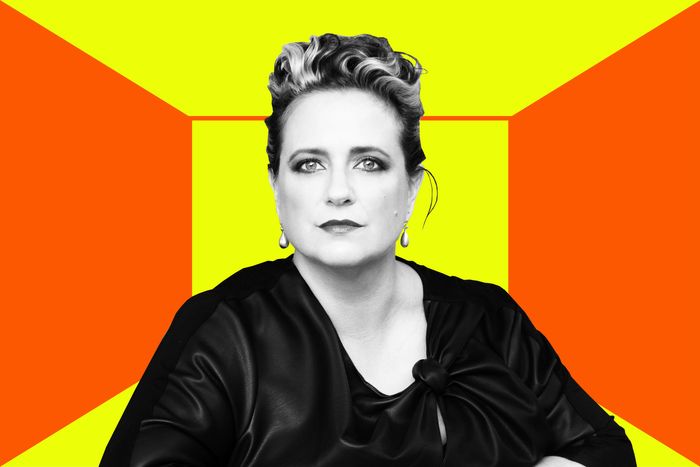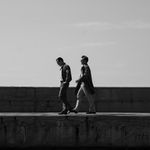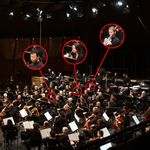
New York’s “21 Questions” is back with an eye on creative New Yorkers. Laura Raicovich was formerly the executive director of the Queens Museum, was the deputy director of the Dia Art Foundation, and led global initiatives at Creative Time. Last year, she authored Culture Strike: Art and Museums in an Age of Protest.
Name: Laura Raicovich
Age: 49
Neighborhood: Chelsea
Occupation: Writer and curator
What’s hanging above your couch?
A drawing by Rico Gatson and prints by Shahzia Sikander, Mickalene Thomas, Elizabeth Peyton, and Paul Ramirez Jonas. The pieces I have are related to projects I worked on or have been gifted to me.
What’s the first job you had in New York?
I was an intern at the Cloisters after my first year of college. It was the best thing ever. I had no idea of all the jobs that existed inside a museum. The conservator at the time, Michele Marincola, was in the midst of this crazy project to get these bugs out of medieval polychrome sculptures without damaging the wood or the paint. She came up with this ingenious way of suffocating the bugs with plastic bags she put all over the sculptures and sucked the air out and they died. I was like, That’s a museum job?! Cool. I gave tours to day campers and worked really closely with the visitors services staff, some of whom I’m still friends with today.
What color are you always drawn to?
Deep reds and burgundies. They’re bodily colors and interior, in a sense.
What art or artifact are you most surprised you own?
Right before the pandemic, I was refiguring out how and where I work in my apartment. I decided that my dad’s drafting table would be the perfect desk because I could adjust the height. I like my desk to be a little higher than the average table. My dad wasn’t an architect, so it was always weird to me that he had this architect’s table. He died a couple of years ago, and the table has been sitting at my mother’s house.
Which New Yorker would you want to hang out with?
My son and his friends because they’re all 13 and have come of age in this incredibly strange and difficult time. My son is at this magical moment where he’s still a kid, but is also a little bit grown-up, so he has access to this space of imagination that’s really intense and beautiful. We were taking one of our walks during the pandemic and passed by the Vessel in Hudson Yards and he just looked at it and said, “This is an artifact of stupidity.” We weren’t even talking about the Vessel. I was like, “Wow. That is some deep analysis at the moment!”
What’s the last thing you made with your hands?
I do sashiko, which is a Japanese style of embroidery. It’s about recycling scraps of fabric and patching holes in fabric. I’ve been obsessed with this for over five years and have been known to do embroidery in meetings or on retreats because it helps loosen my mind. There are certain patterns that you sew with thick, white thread and I have at least 50 samplers that I’ve done.
Is there one thing you own multiple versions of?
I have a slight obsession with vintage Carlos Falchi handbags from the 1970s and 1980s. I think part of this is because they were a thing when I was in high school. They were ridiculously expensive and chic back then and I couldn’t afford one. Now, nobody seems to care about them ,so I can find beautiful ones. I use a rather plain, very dark purple cross-body bag almost every day. I also have a rich salmon-colored snakeskin bag, a Python bag, and a lime-green one. I feel slightly virtuous for giving these vintage bags a good home.
What New York City museum do you always go back to?
The Cloisters is always a touchstone for me because it was my first job. I grew up on Long Island, and we’d make an annual pilgrimage there. It’s magical during Christmastime and the park is really gorgeous during the summer.
What do you always have next to your computer?
A glass of water. I believe in hydration.
Where is the best view of the city?
I live in one of the older, taller buildings in Chelsea — around 14 stories — and the view from my roof is pretty good. It’s not spectacular, but we have a 360-degree view of the river, New Jersey, and downtown. It’s a more human-scaled view than the ones coming from great heights. I’m into weird, outdated, anachronistic architectural elements in New York and one of the things I especially like about the view from my building is that you can see water towers everywhere.
What building or object do you want to redesign every time you see it?
The Vessel. I just want to remove it. As my son said, it’s an artifact of stupidity because of its own self-importance. I have no idea what it’s supposed to do. What is its purpose? How does it relate to the city? I understand follies and I am a big promoter of creative people and artists broadening our imaginations. But there’s also a responsibility that goes alongside that to not create places of harm. How could a designer ever allow that to be a problem?
What’s one thing you would change about your field?
The grow-or-die sensibility in the cultural fields has become so embedded in what we do that we don’t reflect on how we do things. In order to produce cultural initiatives that resonate for more people, outside of a narrow band of public, if that indeed is a goal, it’s necessary to radically slow down. We have to understand that the speed at which we’re producing culture is actually detrimental. We’re unable to think it through entirely. As efforts have redoubled around diversity, equity, and inclusion initiatives, there has to be space to actually address those structural issues. It just can’t be added to the regular workload. We need fewer exhibitions a year, but greater engagement with the structural pieces of the puzzle.
If you could live anywhere in New York City, where would it be?
I’ve always had this romantic view of the East Village. I like the low-rise vibe, the community gardens are beautiful, and I have really good friends that live there. One of my favorite walks is to go to the East Village and I’ll organize any meeting that’s not Zoom in the neighborhood. In spite of gentrification, there’s economic diversity there. There are still a lot of small businesses there. There’s still idiosyncrasy and a very clear weirdness.
What would you hoard, if it stopped being produced?
Handmade things that are also usable. I have a stack of textiles from Indonesia and the idea that somebody has physically made the dyes and woven the fabric is so special. It’s so rare that this kind of production happens in the 21st century. I really respect and love that.
What do you do to get out of a creative rut?
I do two things: one is cooking. My grandfather was a cook in the Italian Navy and subsequently on merchant ships coming to the Americas from Italy. He was a cook at one of the first Northern Italian restaurants in the city. My whole family is obsessed with food. I love going to the Greenmarket, picking up whatever’s awesome, and planning a menu for the week. The other thing is playing tennis. I just love hitting the heck out of that little yellow ball. It’s a real stress reliever.
Where was your first NYC apartment and how much was the rent?
I lived on Eighth Avenue and St. John’s in Park Slope when I graduated from college. This was in 1995 and my share of the rent was $550. I lived with a slightly mad medieval musicology student who was 20 years older than me. Let me tell you: It didn’t last long.
Where in the city do you go to be alone?
The Ramble in Central Park. It gives you a fake aloneness where you’re alone but only because you don’t see the people around you. It’s one of the most beautiful spots in the city because of that. I love that as city dwellers, we can convince ourselves that we’re not living on top of each other by being in this absolutely constructed environment of wildness.
What’s the worst piece of career advice you’ve ever gotten?
Someone told me not to have a baby. Raising a child is the most transformative thing I’ve ever done and it’s given me insight into everything that I do. It’s such a retrograde notion that people shouldn’t because of some kind of career-killing fear. A number of artists have shared with me similar stories of being told that they should not have children because they won’t be taken seriously. I find that very staggeringly small-minded.
What have you given away to someone that you wish you could get back?
Oh my God — I’ve given away so much time to people and institutions and situations that were not necessary and also were not beneficial. I wish I had that time and energy back.
What’s your favorite NYC restaurant and regular order?
My favorite restaurant is Txikito, which is a Basque restaurant on Ninth Avenue by 24th near where I live. It’s run by friends of mine who also have a couple restaurants in Brooklyn, but it hasn’t reopened since the pandemic. It’s amazing and we have a largely standard order of tapas that includes squid with a pine-nut sauce that’s insanely delicious, croquetas, and this thinly sliced octopus terrine that’s incredible. And it’s also one of the few restaurants that has Vermouth on tap.
What descriptive phrase do you want on your obit headline?
That I made a difference, and there was something that I did that helped other people think through culture or the way they live. I’ll be dead, so it won’t really matter! But at the same time, I would like to have helped someone imagine our present in a better place than it currently is.




